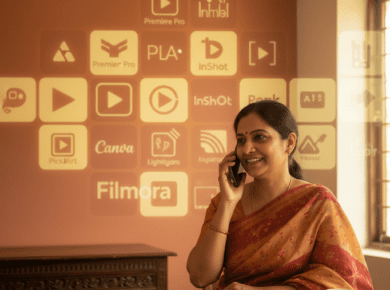Educational psychology is the exploration of how individuals learn and remember information. There are different methods of educational psychology that helps in examining the different learning methods of individuals, as well as various teaching techniques and instructional processes.
Educational psychologists investigate the learning processes of children and adolescents, considering external factors and behavioral aspects that may impact a student’s learning experience.

There are six main methods of educational psychology, which we will discuss in the following section.
Main methods of educational psychology
This scientific study involves the systematic investigation of human behavior, employing scientific methods to collect and organize information. There are many benefits of educational psychology. Understanding the methods of educational psychology is equally important. This can help teachers to deal with their students at a better level and improve their teaching strategies accordingly.
The primary objective of educational psychology is to enhance teaching methods and aid teachers in understanding how students learn. This field encourages the use of innovative learning techniques to improve education delivery in classrooms.
Here are six main methods of educational psychology that provide systematic, scientific, and consistent knowledge.
1. Introspection

Introspection is a ‘self-observation methods of educational psychology where the prospect does a self-observation of his/her mental state and what are the experiences or thoughts that pass through the mind of the prospects in the given situation.
For example, if you ask a student any question, the student will recall what he/she has learned or the concept they grasped and then answer the questions. All the concepts he/she recalled while they were thinking about the answer are self-observations.
When a student remembers and thinks about something the feeling and thoughts they have are what they experienced in their mind. There are many advantages of this educational psychology method, as it can throw light on the mental state of an individual at a particular time.
This reflects on the mental experience of the individual. This method does not require any cost, laboratory, or apparatus. There are certain limitations to methods of educational psychology, as this method’s outcomes, i.e., the observations of the prospects’ mental state, cannot be verified by any other person, and thus any unverified results are not considered scientific.
That results in making this an unscientific method. Apart from this, our immediate memory can be helpful in recalling, but that may affect the process that we want to study. Thus introspection becomes retrospection. These are some of the limitations of these methods of educational psychology.
The different types through which introspection methods can be conducted are:
- Forms- where the observer or teacher, in the case of education, writes down their observations
- Questionnaires- Using questionnaires is really helpful, and clear instructions can lead the good results as many questions directly focus on the retrospective process, which is a pure form of introspection.
2. The observational method
One of the most popular methods of educational psychology is the observational method, also known as the ‘objective observation’ used for the collection of data. In this method, the behavior of the prospect is observed by another person. The behavioral changes may include bodily changes, gestures, expressions, speech, etc.
This method is more widely used by child psychologists, and they make a record of the observations. One of the major difficulties with this educational psychology method is that it becomes difficult for the observer to keep pace with the prospect.
Later on, this difficulty was solved with the help of type recording, stenographers, and photographic films. Apart from this, one problem that can directly influence the observations is the presence of the observer in the same room. In order to resolve this problem, single-sided screens and observation rooms are created.
In most child psychologist clinics, these rooms are available, but later on, the prospect gets used to the presence of the observer and will behave naturally.
While using any method, there are always some precautions to be taken in order to have clear and accurate information. Some of such precautions are as follows:
- The observer must have an objective attitude, and the observations should be free from personal bias and prejudices.
- Before the final conclusion has been made, one must have a number of observations of others in similar situations.
- We should put out observations with those made by others.
- The observer must be able to differentiate between the observations and interpretations.
- In order to have complete accuracy, observations made in a particular period of time should be evaluated on the basis of various aspects.
The observer must take observations in s defined period of time, and with all the observations, they can conclude after being evaluated in various situations and on different criteria.
3. The experimental method
Experimental method in educational psychology has brought a big change in the psychology industry. The introduction of experimental methods has brought a lot of progress as it introduced different methods of memorization, what imagination is, mental fatigue, the factors that affect learning, the effects of giving children coaching for tests, the role of maturation, and other things.
Experimentation is basically observation under controlled circumstances. Many scientists over time have conducted different experiments, such as Rice and Common conducted experiments on spelling achievements, Ebbinghaus conducted experiments on memory, and many others were done.
Suggested : How Can Teachers Help Students Stay Organized?
An experiment consists of one independent variable and others as dependent variables. The biggest thing in an experiment is all the conditions that are occurring should be unchanged, constant, or controlled.
There are many characteristics of an experiment that make these methods of educational psychology :
- It enables us to study behavior under controlled circumstances.
- It can be repeated without any difficulties
- The results are reliable.
There are certain steps to conduct an experiment, and those steps are:
- Statement of problem
- Formulation of hypothesis
- Creating the independent and dependent variable
- Controlling the conditions of the experiment
- Selection of experimental design
- Analysis of result
- Verification
- Confirmation of the result as per the hypothesis
This is how an experiment can be conducted, and this can be really helpful for teachers to understand their students’ certain behaviors. There are certain limitations to this educational psychology method as well.
Such as the restriction of time and space, it being time-consuming, every variable cannot be controlled, artificial conditions, it being also little expensive, and other difficulties are there.
4. The clinical method
The clinical method, also known as the case study method, is most used by psychiatrists and child psychologists. This method of educational psychology is very helpful when teachers want to understand why an individual student is behaving differently or isn’t able to score academically.
This educational psychology method is used to find the proximate cause or source of the problem, such as anxiety, depression, obsession, worries, or educational or vocational maladjustments.
Suggested: Anxiety Management Techniques For Teachers
The clinical method does not determine the behavior of an individual but rather in resolving one’s problem and helping them. Firstly the clinical investigator defines a hypothesis about the problem being faced by the prospect, and then data is collected on the basis of case studies, interviews, visits to psychological tests, home and school, and others.
In this case, history includes health history, family health history, family relations, and other parameters to understand what factors influence the personality of the prospect.
The results of the clinical method may not have attained the accuracy of the experimental method but will give a new hypothesis that can be examined with the help of the experimental method.
5. The genetic or developmental method
This study focuses on the change that occurs in the behavior over time. It assumes that understanding how a person acts as an adult involves studying how they acted when they were a child. This helps us understand how their behavior changes as they grow older.
We can also use this method to study how a person’s imagination, thinking, and reasoning develop over time. It helps us answer questions like: How do we become who we are? What do we get from our parents? How does this change as we grow up?
Does our thinking and behavior change as we get older? How do we learn to see and understand things?
This way, teachers can understand the behavioral change in the students, and with the help of case histories, teachers can help students.
6. The testing method
Testing methods include different ways of measuring things like personality, behavior, and intelligence. Some of these methods are questionnaires, rating scales, and checklists.
Some people consider these last three methods to be different from testing methods and call them field investigation methods.
Questionnaires are like surveys that people fill out to describe their own thoughts or feelings. Rating scales and checklists are ways for observers to rate someone’s behavior or personality. They can give scores that show how much of a certain trait a person has.
This is one of the easiest ways for teachers to measure the behavior of their students. These tests are specially designed to measure the aptitude, achievements, personality traits, and intelligence of the students.
Final Thoughts
Educational psychology is a very vast study subject, and its methods are really helpful in understanding the psychological behavior of students and helping them when they are dealing with tough times. In the article above we have talked about the 6 main methods of educational psychology and how they can be helpful for teachers.
6 Amazing Methods Of Educational Psychology You Must Know FAQs
A1: The 6 main methods of educational psychology are observational, experimental, clinical, developmental, and testing methods.
A2: Case study methods provide in-depth information about complex situations or behaviors that cannot be easily captured by other research methods.
A3. The most accurate and reliable method of educational psychology is the experimental method.
A4: The oldest method of study in educational psychology is introspection.
A5: The method of educational psychology real than introspection is the Observational method.



